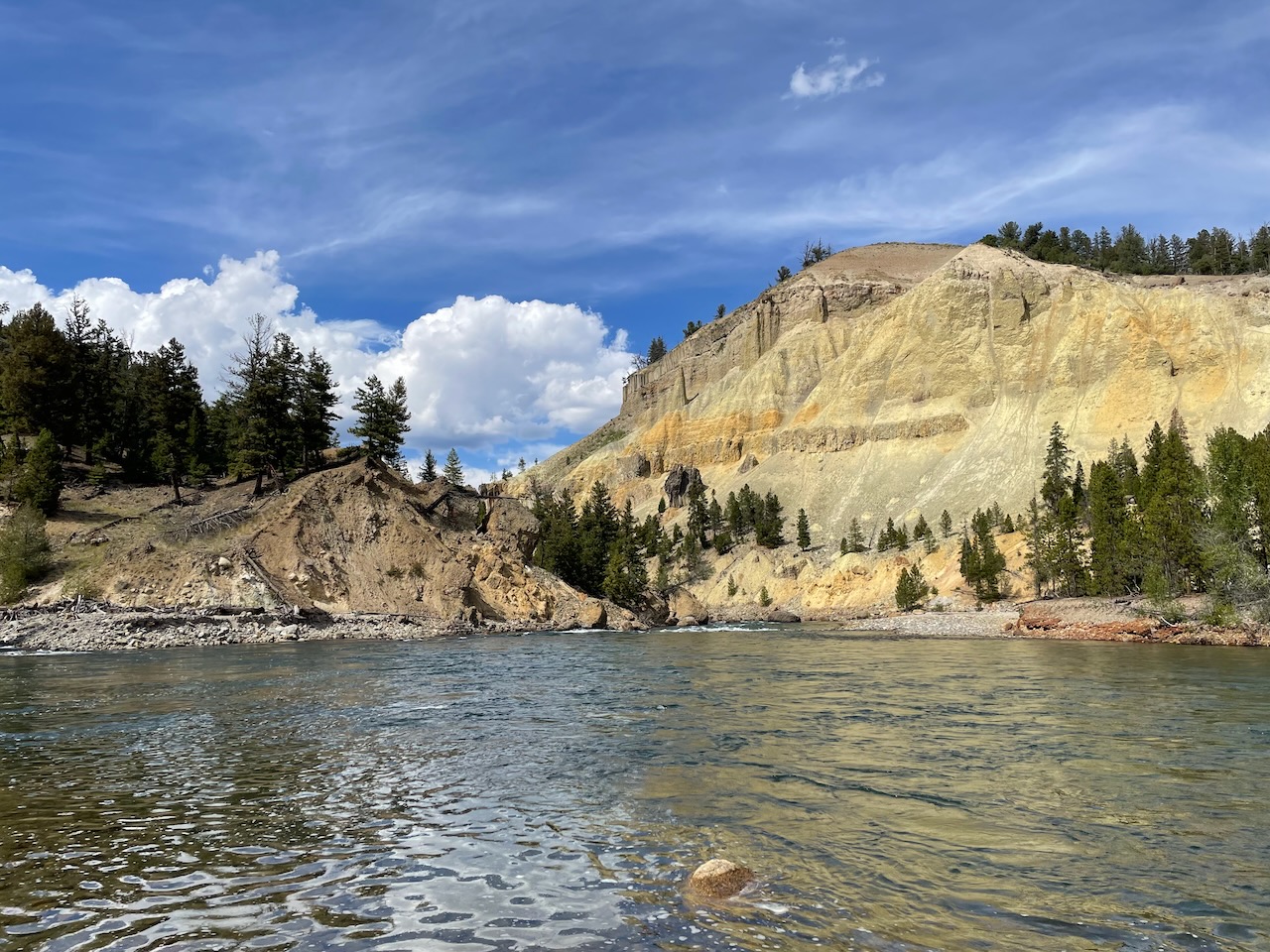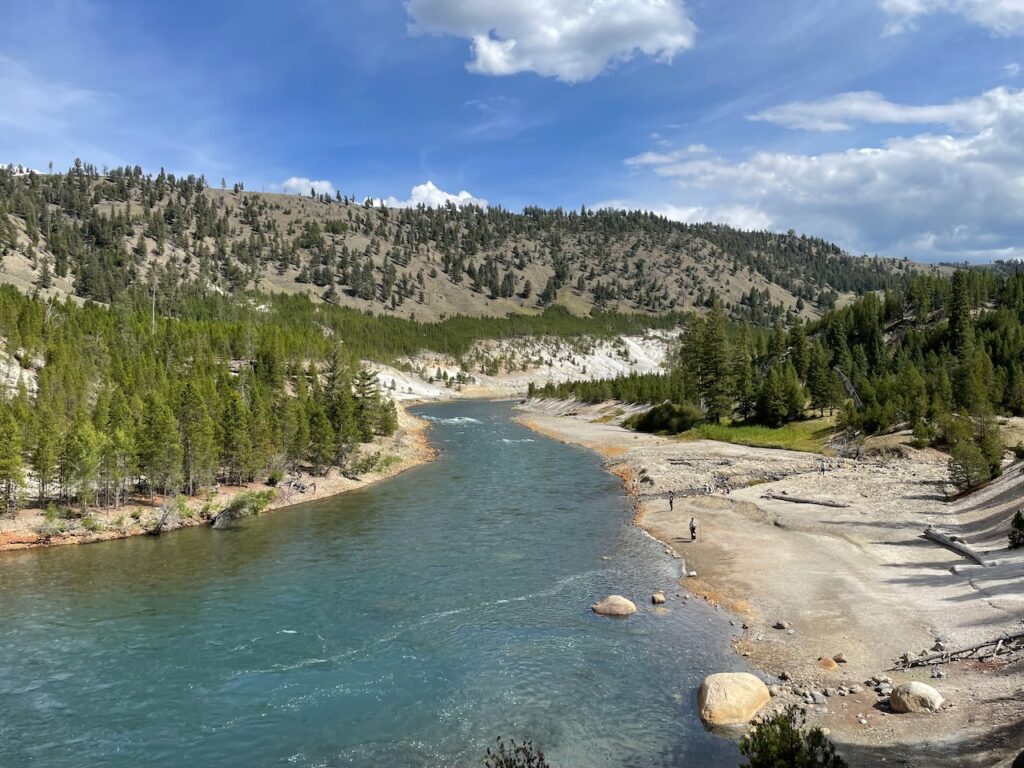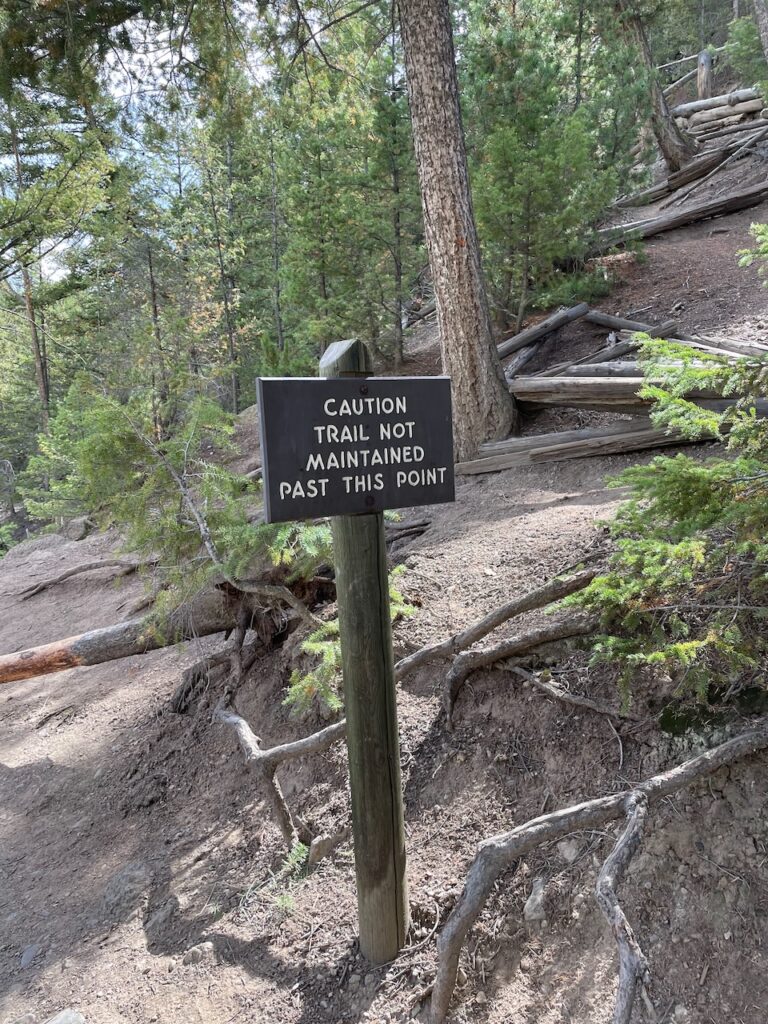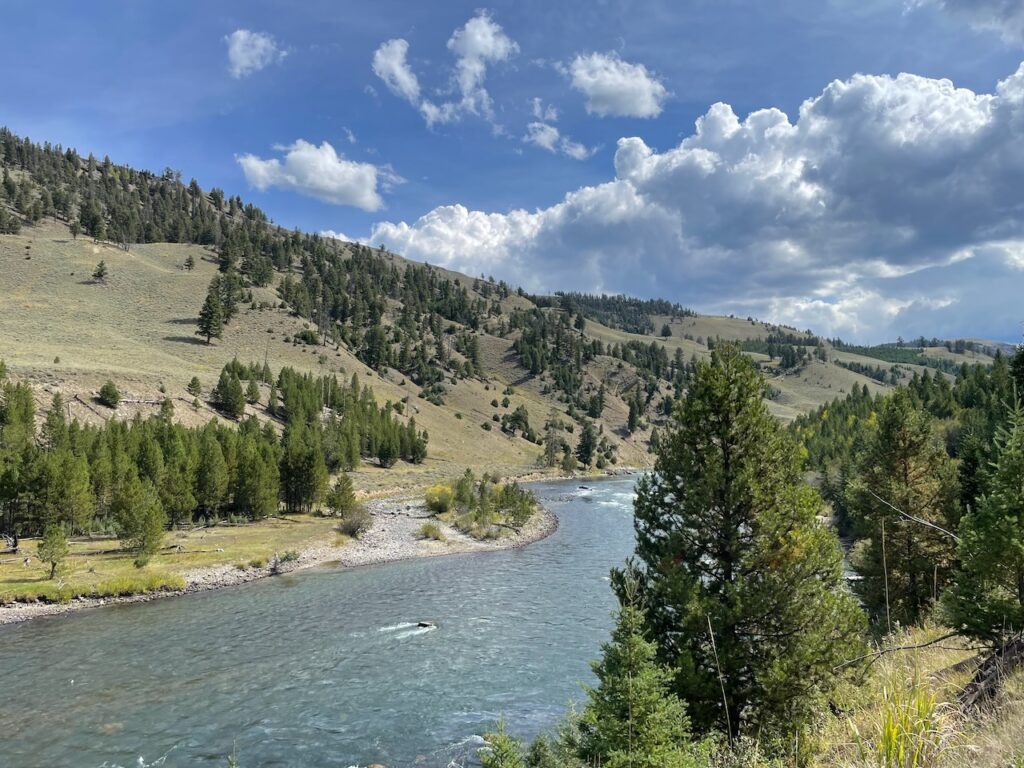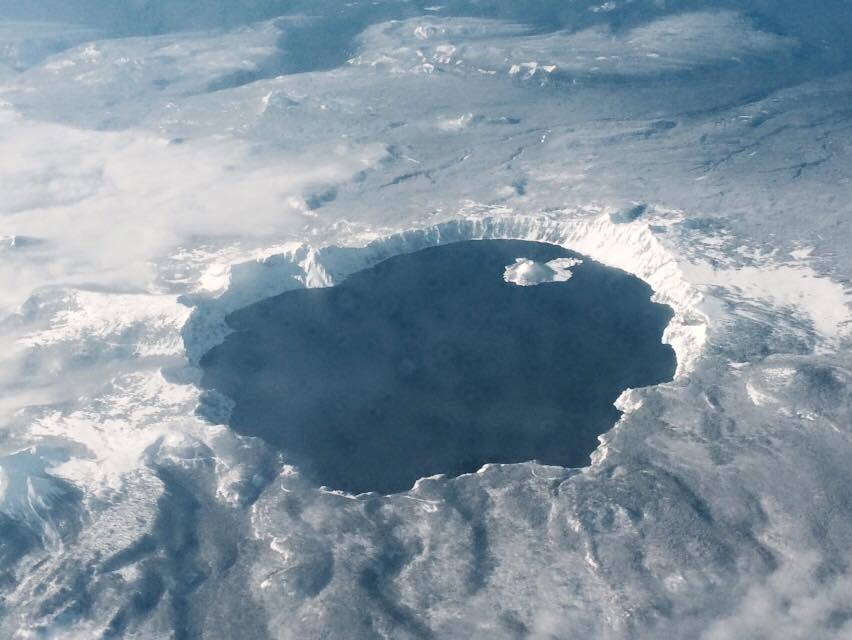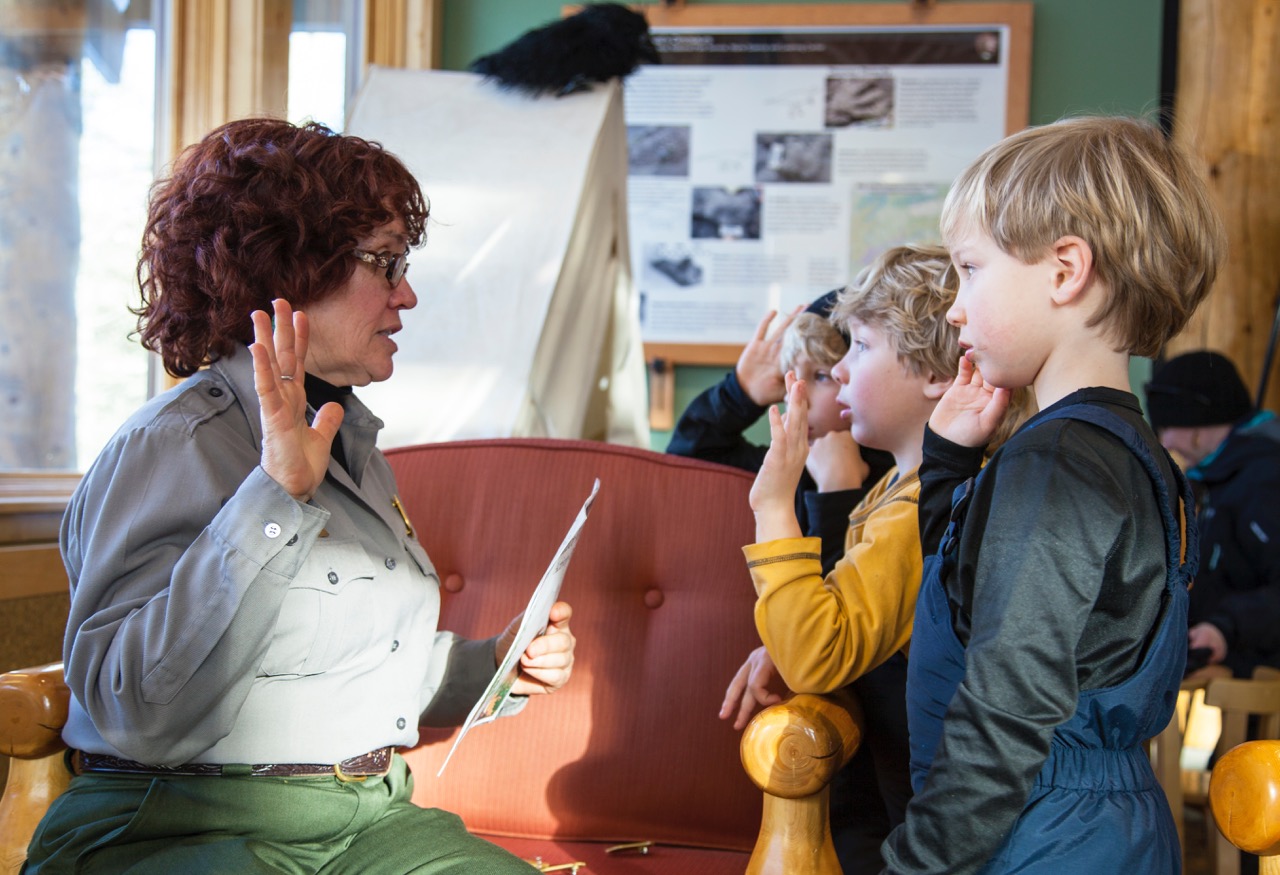Location: Tower Fall Area
Distance: 1 mile to 4 miles
Elevation Gain: 275 to 500 feet
Gear Typically Needed In the Winter: Snowshoes and/or traction devices, warm clothes, trekking poles, food and water
Gear Typically Needed In the Summer: Bear Spray, sunscreen, food, and water
Short, steep, and sweet, the hike to the Yellowstone River from Tower Fall (yes it is Tower Fall and not Tower Falls) is a classic trek that not very many visitors to Yellowstone walk. Many will park and wander to the Tower Fall overlook, but few who gaze at the waterfall will make the hike down the hill to the southern bank of the Yellowstone River. That is probably because the trail loses over 250 feet of elevation in under half a mile. The trail is also unpaved, unlike the easy walkway from the parking area.
Those who decide to make their way down to the river from the overlook will follow well-maintained trail switchbacks down to the Yellowstone River, with glimpses and glances of the beauty awaiting them every so often. Once you are nearly down the switchbacks, you’ll encounter one last challenging part of the trek before you are at water level- a quick descent down loose dirt and gravel. This is honestly a turnaround point for many, as the last few feet can be pretty daunting. If you have trekking poles or a walking stick, you’ll be able to feel much more confident and comfortable.
Upon reaching the river, you have a few decisions to make. You can either find a spot to sit and take in the views, walk upriver a bit, or return up the way you came. You’ll eventually have to hike back up the hill to reach the parking area, but since you have already descended, you might as well enjoy it. As you stand near the river, a glance across the water to the northeast will have you looking up the steep slopes toward Specimen Ridge, 700 feet above you. Take a close look for wildlife along this hillside, as bears, elk, bison, and even bighorn sheep can occasionally be spotted. One thing many do not realize when they are standing in this spot is that they are technically still in the Grand Canyon of the Yellowstone River, which starts 18 miles upriver.
If you want to do this in the winter, be aware you’ll need to snowshoe or cross-country ski from the junction at Roosevelt to reach the start of the descent to the river. It will add five miles round trip and roughly 450 feet in added elevation. Winter conditions from the overlook down to the river may also be extremely treacherous.
Important Trailhead Alert
No matter what you may hear from seasonal staff, the trail to the base of Tower Fall is closed to the public after it was damaged by landslips and erosion in 2004. As of publication (April of 2024), there are no plans to reopen this section of the trail. Do not enter this area.
What I Consider To Be The Highlights
While Tower Fall is a pretty stop when driving between Canyon and Roosevelt, a full appreciation of the region’s awesome geology and views is a bit lacking as you stand at the paved viewpoint. Hiking down to the river gives you all of this and more.
While I love the views from the first river access spot after descending the trail, one of my favorite activities is to hike upstream for a mile or so. A faded boot path can be found above the riverbank, climbing a few small rises before emerging onto wide open space. Hike to the end of this and then follow the boot path along the riverbank back. You’ll see birds, animals, and some views of the Yellowstone River that less than 1/2 of 1% of all visitors to the park have ever seen. You’ll also find some pretty nice spots for silence and seclusion in this popular corner of the park.
What Some Consider To Be The Lowlights
Many will bemoan this trail because of the fast elevation gain and loss. Others will say not to wander down to the river because you can’t get to the base of the falls. Every single time I have hiked down to the river and back up, I encounter people who have made an unwise (for them) decision to hike down to the water. Please know your limits before attempting to trek this short, but steep trail. The trail starts at 6,500 feet above sea level, far higher than most are used to being active at.
As far as not being able to get to the base of the waterfall, I totally get that too. I am bummed that the experience is no longer possible. However, beauty in nature isn’t just found in the spots where others have gone. Sometimes we must travel down a path and let the power of the wilds of Yellowstone speak to us.
The aforementioned criticisms of why people do not like this trail are valid and should be known. However, if you are fit and able to walk down to the river, you definitely should. Spend some time at the river, listen to the water flow by, watch the clouds drift overhead, and enjoy this unique experience in Yellowstone National Park as best you can.
Want More Information On This And Other Hikes Around Yellowstone
Embark on a journey beyond the boardwalks of Yellowstone! Dive into the wonders of the Yellowstone region with my guidebook, showcasing my top-rated hikes. Whether you prefer the convenience of an ebook or the tangible experience of a paperback, this guidebook is your key to unlocking unforgettable adventures. For an even more immersive experience, join me on a guided hiking tour throughout the year.
Embrace the opportunity to see Yellowstone like never before – your next trail adventure awaits!

